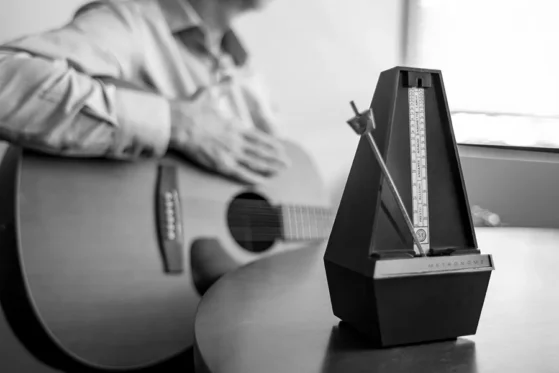Improve Your Chord Transitions | A Complete Acoustic Guitar Guide
If you’re learning acoustic guitar, chances are you’ve already mastered a handful of chords — perhaps the open G, C, D, and E minor. Yet, when you try to play a song, the real struggle often lies not in knowing the chords, but in moving between them cleanly and smoothly. This is where the need to improve your chord transitions becomes essential. They are the heartbeat of guitar playing, determining whether your music flows naturally or sounds disjointed and hesitant.
In this comprehensive guide, we’ll explore why chord transitions matter, the common challenges guitarists face, and then walk you through in-depth, practical strategies to dramatically improve your chord changes. By the end, you’ll have a clear path to making your acoustic guitar sing with effortless fluidity.

Why Are Chord Transitions So Crucial?
Music is about continuity and flow. The individual chords you play are like the words in a sentence — but the transitions between chords are the spaces, pauses, and phrasing that give meaning and emotion to the music.
When your chord transitions are smooth:
Your rhythm stays steady and locked in.
Your strumming hand can maintain momentum without awkward stops.
The overall feel is natural, engaging, and professional.
On the other hand, hesitant or jerky transitions can disrupt the groove, making even a simple song sound choppy and unpolished. Therefore, focusing on transitions isn’t just about technique — it’s about bringing life to your playing.

Identifying the Core Challenges in Chord Changes
Before diving into solutions, it’s helpful to understand what exactly makes chord transitions challenging. Most guitarists face these obstacles at some point:
Finger Placement Confusion: When switching chords, your fingers might not “know” exactly where to land next. This leads to fumbling or incomplete chord shapes.
Breaking Rhythm: Often, the strumming hand stops or slows while the fretting hand searches for the next chord, causing timing problems.
Muscle Tension: Pressing too hard or gripping the neck tightly slows down finger movement and causes fatigue.
Lack of Muscle Memory: Each chord change feels like a new problem rather than a practiced motion.
Understanding these common roadblocks helps you target your practice efficiently, rather than blindly repeating mistakes.

Train Your Eyes to Look Ahead
One of the simplest ways to improve your chord transitions is to look at the next chord before you play it. Many beginners keep their eyes fixed on their current hand position. This often causes a last‑minute rush when changing chords.
Instead, during the final strums of your current chord, glance at the shape of the next one. This visual cue prepares your brain and fingers ahead of time. The change feels less like a sudden jump and more like a smooth glide.
With practice, your eyes will guide your hands naturally. Your fingers will start to anticipate the next move without hesitation. This habit keeps your rhythm steady and makes it easier to improve your chord transitions over time.

Find and Utilize Anchor Fingers
Here’s a secret that many guitarists overlook: many chord changes share one or more fingers in the same position — these are called anchor fingers. Keeping these fingers planted while the others move saves precious milliseconds and reduces unnecessary movement.
For example:
Moving from a C major chord to an A minor chord, your index and middle fingers stay in place, only your ring finger lifts and repositions.
Shifting from G major to D major, you can keep your ring finger on the 3rd fret of the B string for a smoother change.
By consciously recognizing these anchor fingers and training your hand to keep them grounded, you reduce the effort and time your fretting hand takes during transitions.

Slow Practice with Metronome — The Foundation of Accuracy
When practicing chord changes, speed is less important than precision. Begin by setting a metronome to a slow tempo — maybe 40 to 60 beats per minute. Play your first chord for four beats, then change to the next chord on the next measure.
This deliberate pacing allows your fingers to move carefully, building the correct pathways in your muscle memory. As accuracy improves, gradually increase the tempo.
By prioritizing consistency at slower speeds, you avoid ingraining sloppy habits that become difficult to fix later.

Isolate Difficult Transitions and Loop Them
If there’s a particular chord change that feels especially tricky, don’t force yourself to practice entire songs. Instead, isolate that transition and loop it repeatedly.
For instance, if the switch from F major to D minor trips you up, focus exclusively on that change. Play four beats on F, then four beats on Dm, and repeat.
This focused repetition allows your fingers to ‘learn’ the exact movement needed, gradually reducing hesitation and increasing confidence.

Mental Visualization — Practice Even When Away from the Guitar
You don’t need to be physically playing the guitar to improve chord transitions. Close your eyes and mentally picture your fingers forming each chord shape and moving fluidly to the next. Visualizing these motions reinforces neural connections in your brain that translate into faster, more confident finger movements when you actually play.
Try this mental rehearsal several times a day — it’s especially useful during times when you can’t physically practice, like during breaks at work or school.

Relax Your Grip to Increase Speed and Comfort
One of the most overlooked yet impactful tips is to loosen your grip on the fretboard just before changing chords. Pressing down too hard or squeezing the neck tightly slows finger movement and causes tension.
Try to keep your hand relaxed, pressing only as firmly as needed to get a clean sound. A lighter grip allows your fingers to lift and move more freely, speeding up your transitions while reducing fatigue and hand pain.

Practice Transitions Within Real Songs
While drills and isolated exercises are vital, applying what you’ve learned to actual songs is where the magic happens. Start with slower, simple songs like “Knockin’ on Heaven’s Door” by Bob Dylan or “Horse with No Name” by America, which have straightforward chord progressions.
Playing songs helps you internalize transitions in a musical context, making your practice more enjoyable and meaningful. Once you’re comfortable, challenge yourself with faster or more complex progressions.

Master the “Lift Early, Land Early” Technique
Timing your finger movements is just as important as accuracy. As you strum the last beat of the current chord, start lifting your fingers off early, preparing for the next chord. Simultaneously, land your fingers on the fretboard slightly before the downbeat of the new chord.
This overlapping approach minimizes gaps between chords and keeps your rhythm uninterrupted. Instead of pausing mid-song, your fingers are already ‘in motion,’ creating a seamless sound.

Combine Strumming and Chord Changes Early in Practice
It’s common for beginners to practice chord shapes separately from strumming. However, to become a confident player, it’s essential to combine chord changes with strumming patterns as soon as possible.
Begin by strumming slowly with simple downstrokes while switching chords. Once that feels natural, introduce more rhythmic variations and patterns. This integration trains your brain and hands to work together, so you’re not switching chords in isolation but as part of a flowing musical rhythm.

Record Yourself and Listen Critically
An excellent way to track progress is to record your practice sessions. Listening back reveals issues that you might not notice while playing — such as uneven rhythm, hesitant transitions, or inconsistent strumming.
By reviewing recordings, you can pinpoint problem areas and tailor your practice accordingly, making each session more productive.

Be Patient and Consistent
Perhaps the most important point is this: smooth chord transitions don’t happen overnight. They are built through consistent, mindful practice that rewires your muscle memory. Even the world’s best guitarists spent countless hours struggling with changes early on.
Trust the process. Celebrate small improvements. With time, your hands will learn to glide effortlessly across chords, and your acoustic guitar will become an extension of your musical voice.

Final Thoughts
Improving chord transitions on the acoustic guitar is a journey of precision, patience, and practice. At The Mystic Keys, our Guitar Lessons Online are designed to guide you through this process step-by-step. By incorporating the strategies outlined above — looking ahead, using anchor fingers, slowing down with a metronome, isolating difficult changes, mental visualization, relaxing your grip, practicing with songs, mastering timing techniques, integrating strumming, and self-review — you’ll build the skills to play smoothly and confidently.
So pick up your guitar today and start practicing these techniques. With dedication, your playing will transform. Soon, you’ll be flowing through chord changes with ease, unlocking new songs and styles, and sharing beautiful music with the world.
For more information and exciting resources about learning music, visit our website at The Mystic Keys. For more music content and exciting offers follow us on
Facebook, Instagram, YouTube, LinkedIn, Twitter, Pinterest, and Threads,








